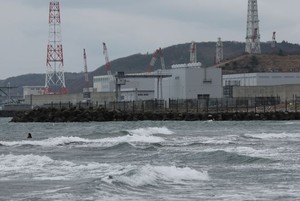THE ASAHI SHIMBUN
June 29, 2023 at 08:00 JST
MINAMI-BOSO, Chiba Prefecture--Ever wondered where stinking rich petrolheads go to race their supercars away from prying eyes?
Places like the Magarigawa Club, where membership costs 36 million yen ($254,140), enough to buy a house, plus an annual fee of 220,000 yen. More than 200 individuals were already on the waiting list in June. The club is scheduled to open in July.
Perks include being able to race at a maximum of 280 kph, equivalent to speeds found on the Formula One circuit at the Fuji Speedway in Shizuoka Prefecture.
The 100-hectare site cost more than 30 billion yen to build and comes with luxury accommodation and a heated pool, just like an upmarket hotel.
The track was developed by Cornes Tomiura, an affiliate of Cornes & Co. Ltd., a bespoke dealership in Tokyo’s Minato Ward for the cream of the crop in supercars: Ferraris, Lamborghinis, Porsches and Rolls-Royces.
Situated in the Igura district of Minami-Boso’s Tomiura-machi district, the Magarigawa Club nestles in a mountainous area famous for loquat production.
The operator secured 100 hectares of land, of which 76.4 hectares were purchased in March 2018 from Minami-Boso city for 160.47 million yen.
The full-blown racing track, 3.5 kilometers long, was designed by the Tilke Engineers & Architects studio in Germany, which is no stranger to working on Formula One courses.
A major selling point is the track’s unrestricted layout as it does not need to comply strictly with standards for hosting international racing events.
There are 22 corners, as well as steep ups and downs. One of the uphill slopes has a sharp inclination pitch of 20 percent, which translates into an elevation of 20 meters per 100-meter stretch, while the maximum downhill inclination pitch is 16 percent.
The 800-meter and 700-meter straights allow drivers to hit 280 kph, the maximum speed allowed on the course.
“No other courses the world over are full of so many gimmicks for motorists to enjoy driving,” said auto journalist Peter Lyon, 62, who was a race competitor himself.
The track’s pit lane beside the clubhouse can accommodate 36 cars and comes with air-conditioning systems. A dedicated owners’ garage is intended for the permanent storage of 300 vehicles.
SUPERCARS NOT JUST FOR SHOW
The Magarigawa Club boasts numerous other facilities to cater to the whims of its super-rich clientele.
There are 11 owners’ paddocks for lodging as well as a clubhouse equipped with a restaurant, a gym, a natural hot spring, a spa, a family lounge for those with small children and a 25-meter-long heated swimming pool.
The amenities will be open exclusively to the 500 regular members and to a lesser degree to the 750 associate members. Regular members are solicited in phases.
The ownership of five of the 11 paddocks was done through bidding on the very day of release at prices ranging from 250 million yen to 800 million yen. An additional 14 paddocks are to be built.
“Owners of supercars will lose places to operate, given environmental issues, advanced self-driving technology and other factors,” said a Cornes representative. “They will be deprived of the meaning for keeping such splendid vehicles. So we, as an auto retailer, created a safe space for them to enjoy driving.”
The southern part of the Boso Peninsula in Chiba Prefecture is increasingly playing host to auto-related institutions because it is within easy reach of Tokyo, along with Haneda and Narita airports, following the opening of the Tokyo Bay Aqua Line and Tateyama Expressway extension.
For example, the full-on Sodegaura Forest Raceway started operations in 2009 in Sodegaura for official races and other events. The Porsche Experience Center Tokyo came into existence in 2021 in Kisarazu with a 2.1-km track.
Demonstration rides for auto magazines and launch events for new models, combined with car-themed facilities, are also relocating to the Boso area from Hakone in nearby Kanagawa Prefecture and elsewhere.
(This article was written by Kyota Tsutsumi and Noriyuki Shigemasa.)




















A peek through the music industry’s curtain at the producers who harnessed social media to help their idols go global.
A series based on diplomatic documents declassified by Japan’s Foreign Ministry
Here is a collection of first-hand accounts by “hibakusha” atomic bomb survivors.
Cooking experts, chefs and others involved in the field of food introduce their special recipes intertwined with their paths in life.
A series about Japanese-Americans and their memories of World War II